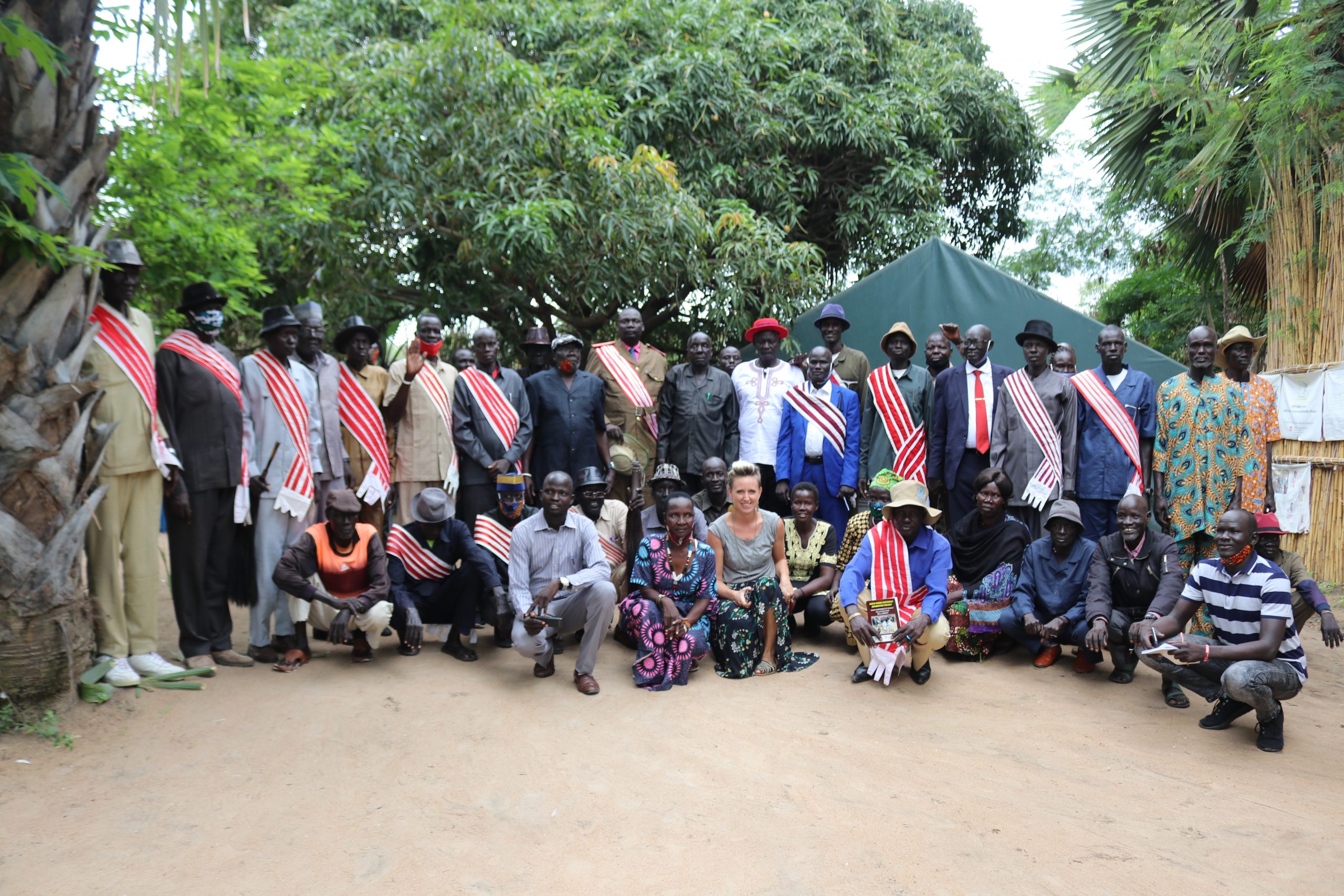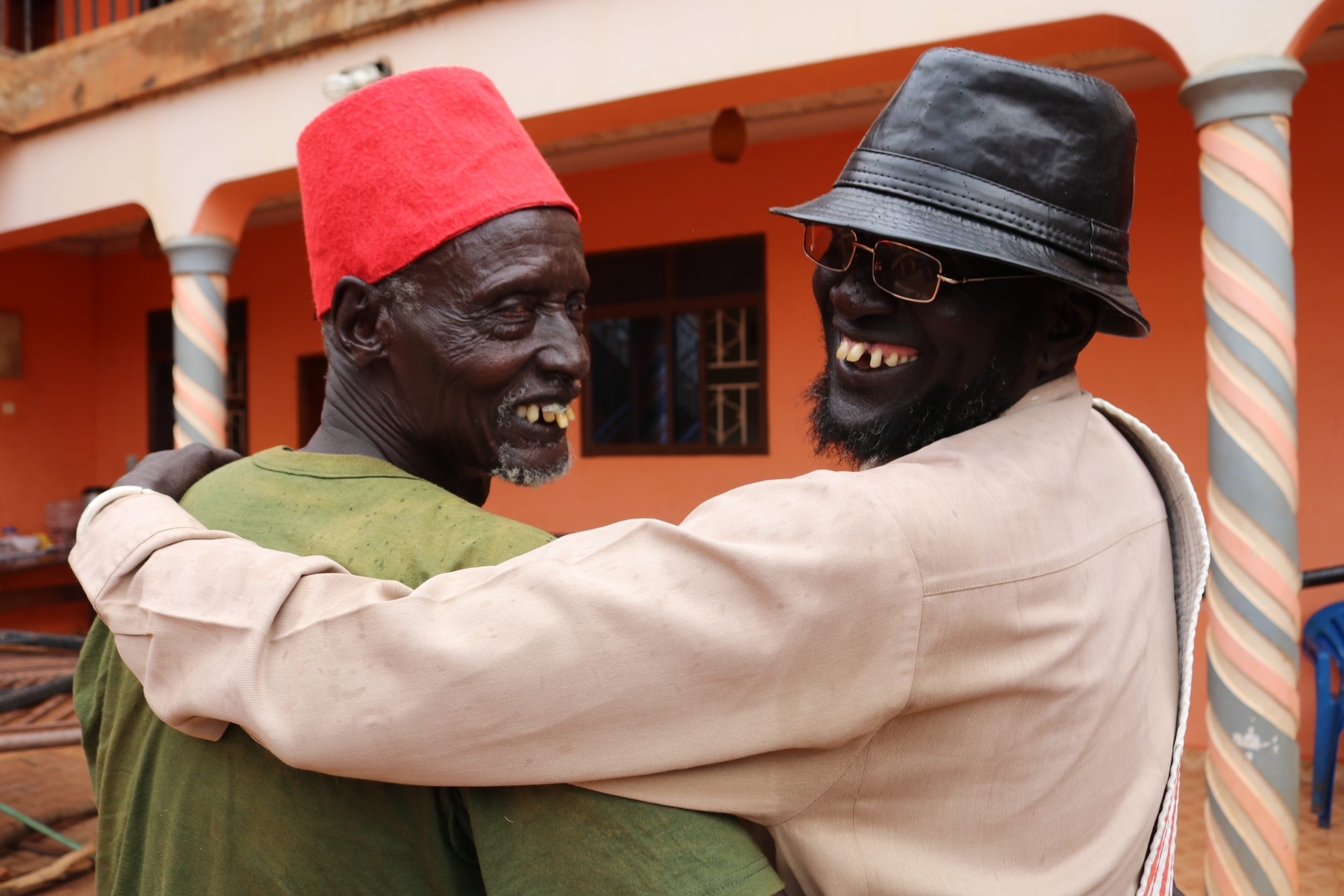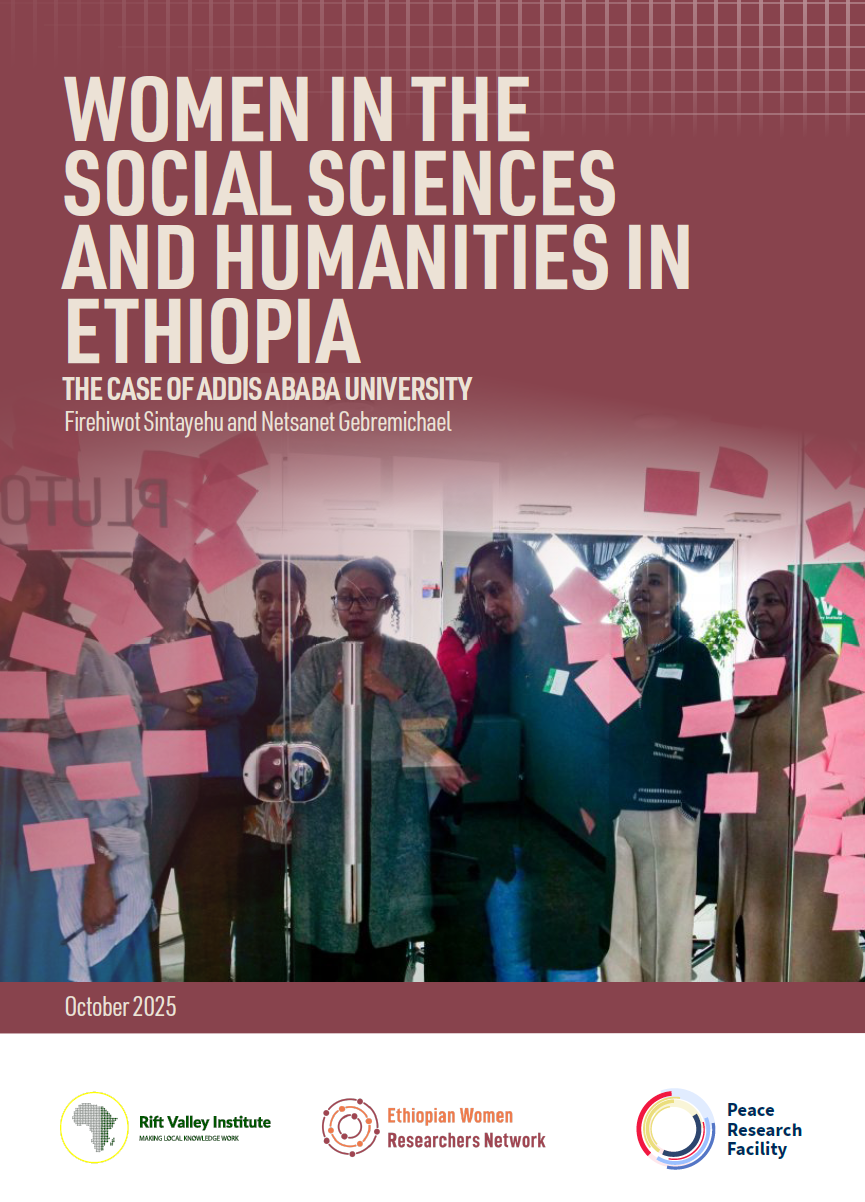
By Machot Amuom, RVI Researcher.
I remember the joy and peace we had after Wunlit in 1999. When the 2013 violence happened, killing was done. When peace was signed in 2015 and again in 2018, nothing changed. When we remember 1991 killing, and peace we had after Wunlit (1999), we can still make peace possible. Today it is us who take peace to Juba and bring peace from Juba to our people.
Paramount Chief Joseph Kong Yuac, Nuer chief from Bentiu
In 2011, South Sudan gained its independence after nearly half a century of war. At the heart of this struggle was the Sudan People’s Liberation Movement/Army (SPLM/A). Established in 1983, the movement experienced several bloody power struggles, including the most famous incident when the SLPM/A split into the Nasir faction, led by Dr Riek Machar (an ethnic Nuer), and the Yei faction, headed by Dr John Garang (an ethnic Dinka).
The resulting conflict pitted Nuer against Dinka. At the beginning of the split, the SPLA/M controlled most of the towns in Southern Sudan. The split weakened the movement and the SPLA was driven out of its former strongholds by the Sudan Armed Forces (SAF). It also led to a cycle of communal violence, vengeance and cattle raids between Nuer and Dinka communities. One of the bloodiest incidents was the Bor Massacre of 1991, which left more than 2,000 people dead and caused widespread displacement. The shared pastoral bonds between communities were broken beyond imagination, and some commanders—inspired by the desire to enrich themselves—fueled the conflict further by encouraging cattle raids and arming the protagonists.
In 1997, the New Sudan Council of Churches (NSCC) conducted a series of consultations between the rival sections of SPLA/M about the need for a return to peace and unity between the Dinka and Nuer communities. This was the backdrop to events that led to the holding of a peace conference in 1999 in the remote village of Wunlit in Tonj, now Warrap state. Senior representatives from either side of the Nuer and Dinka divide also met in Khartoum in preparation for, and in parallel to, the Wunlit meeting.
Security for the conference was coordinated by the current President of South Sudan, General Salva Kiir Mayardit, who was then deputy to John Garang and second in command of the SPLA. While some SPLA commanders opposed the conference taking place—particularly those who thought the meeting would be vulnerable to air attacks from the Sudan Armed Forces (SAF)—it went ahead. The Wunlit Peace Conference was more successful than anticipated, bringing an end to eight years of devastating communal conflict between the western Nuer and Dinka. It subsequently ushered in a period of relative stability at the communal level, lasting for several years.
A number of resolutions formulated during the conference were implemented. These included the return of abducted women and children to their communities, the cessation of cattle raids, resumption of cattle trade, and the agreements that were reached to share use of pasture and fishing waters. Also, it was agreed that dowries would be settled in cases where abducted girls who had been married into their new communities were happy to stay there.
While these things were important, the single biggest achievement was the re-unification of SPLA/M in 2002, which paved the way for the eventual signing of the Comprehensive Peace Agreement (CPA) in 2005. The success of Wunlit also led to a number of meetings being held in other parts of the country in the name of south-south dialogue and grassroots reconciliation.
In the minds of many traditional leaders—chiefs, elders and other political elites—Wunlit was an important step towards the eventual independence of South Sudan. According to Magok Gatluak of Hak (a prominent Nuer chief): ‘Wunlit peace is South Sudan. If there was no Wunlit, there would be no flag for people of South Sudan’ [the independence of South Sudan in 2011].
Returning to Wunlit

Wunlit was the most successful and well documented peace meeting in the history of South Sudan—a model for local peace meetings that would take place in future. The peace that was reached between the Nuer and Dinka communities mostly lasted until the outbreak of violence in Juba December 2013. In 2019, under the Rift Valley Institute’s South Sudan Customary Authorities Project (SSCA), a group of South Sudanese researchers, drawn from RVI and the Catholic University of South Sudan, conducted oral history interviews—drawing on training carried out since 2017 by RVI, Likikiri Collective and the Catholic University of South Sudan—with the original participants of the Wunlit peace conference. These were the chiefs, spiritual leaders, elders and organizers—nearly all of whom have become high profile politicians at the national level. These interviews recorded the participants’ memories of Wunlit, which were then compiled into a report: What Happened at Wunlit: An oral history of the 1999 Wunlit peace conference.
On 12 May 2021, a delegation of Dinka chiefs left Juba to travel to Nyal, which is located in the territory of Nuer Nyuong—one of the main agro-pastoralist groupings located in Payinjiar County in Unity state. In Nyal, which is threatened by floods, famine and insecurity, they would meet their Nuer counterparts, most of whom they hadn’t seen for more than two decades.
Despite the elevated status they hold in their communities, some chiefs hadn’t had the opportunity to travel by plane throughout this period, so the experience of flying to Nyal was unfamiliar to them. On arrival, the plane landed at a small airstrip located in the heart of town, which had previously been used during the civil war. The whole town lined up to greet their guests. The old comrades of Wunlit were finally reunited—hugging, laughing, singing and congratulating each for the country’s hard-won independence. For the chiefs who were there in 1999, it was almost unthinkable that they would meet again. The first few hours together were dominated by talk of who is dead and alive. Women, children and men found themselves ululating and singing songs of peace.
Among Nilotic groups, including the Nuer, songs can be used as tools of peace or violence. Peace conferences like Wunlit usually start with songs—known as Diet ee door in Dinka dialect and diit e maale in Nuer. Among those sung at Wunlit was the Wol Athian—a musical tale of the legendary Eighteenth Century Dinka Agar from Rumbek North who was the son of a Nuer woman. Wol fought countless battles with his maternal Nuer uncles, but despite winning many of these, he eventually had to call for peace—motivated by the need to share grazing pastures and fishing grounds. The lesson being preached is the need to make peace, share resources and shun violence.
South Sudanese political elites are very experienced at conducting long peace negotiations. Nuer and Dinka chiefs are especially good at telling long stories and singing or listening to songs. The first few days of the Nyal meeting were taken up by a programme of meetings during the day with stories and singing during the night under the moonlight.
Conversation happened in groups in the compounds during the day and continued in the rooms afterwards. It focused on disarmament, peace and stability and the need for better services in the country—schools, hospitals, roads, telecommunications, veterinary services and humanitarian relief for people affected by floods, which have caused untold damage to the cattle economy in Unity and Jonglei states.
The meeting in Nyal didn’t just evoke memories of Wunlit, it also provided an opportunity for usually voiceless and underprivileged people to speak to those who control political power in South Sudan. After three days of discussions, the meeting ended with a number of resolutions, including a request to arrange a meeting with Dr Riek Machar (First Vice President of South Sudan) and the country’s President, General Salva Kiir Mayardit. Kiir and Machar were both instrumental in the success of Wunlit after 1999.
The meeting in Nyal was followed by a similar discussion in Yirol on 18 – 19 May, enabling Nuer chiefs to hear a wider range of views from their Dinka counterparts. In contrast to Nyal, Yirol is in an area of relative stability—it has been less affected by flooding and food shortages, although insecurity is evident at times. For example, the Nuer chiefs’ arrival in Yirol coincided with an attack on the far northern part of the area by Nuer raiders, causing the deaths of two people and many cattle stolen. The Dinka chiefs in Yirol saw this as an opportunity for the Nuer chiefs to observe the costs of cattle raiding and to consequently talk to their people. In response, two of the visiting Nuer chiefs—Joseph Koang Yuach and Magok Gatluak—visited Yirol Referral Hospital to see the victims of the raids who were being treated there.
Old friends reunited

One memorable consequence of the meeting in Yirol was the reuniting of old friends, some of whom had not seen each other for many years. This included Madut Aguer Adel of Luach and Isaac Magok Gatluak of Hak, whose friendship dates back four decades. The two leaders of the neighbouring Dinka-Luac in Warrap and Nuer-Hak in Unity became friends, despite the history of conflict and raiding between their communities.
Madut and Magok were important attendees of the original Wunlit Peace Conference in 1999. They developed a trademark greeting—hugging and spreading arms around necks while walking and talking. This year Magok arrived before Madut and waited at the airstrip for the plane his friend was travelling on. When they were finally reunited, they embraced to rounds of applause from the many bystanders. While the rest of their groups travelled to the hotel by car, the two chiefs, who both speak thӧk näth (Nuer dialect) and thoŋ muɔnyjaŋ (Jieng dialect), walked there with arms spread around each other, talking and laughing. At the hotel, Madut insisted that the order of accommodation had to be changed so that their rooms were next to each other. In the days that followed, after every session Madut and Magok could be seen together.
While the world of donors is the prisoner of programmed agendas, chiefs need time and space to talk. For the Nuer and Dinka it is important to let our words out—no matter whether they are ugly, this is a true sign of acceptance, peace and reconciliation. Words spoken during events like this are relayed back to communities, discussed in chiefs’ courts and become part of local folklore. Chiefs are ever conscious of this and, as a result, there is always a challenge to stand for truth when speaking.
At the end of the meeting, Magok and Madut had a final farewell hug and promised a better brotherly meeting in future, either in this world or another. Deep down the ambition for a peaceful South Sudan has not perished. Magok—carrying with him a goat presented as a gift by a local youth leader—took his flight back to Juba and Madut returned to Kuacjok.
Meeting the powerful

After the meeting in Yirol, a number of resolutions were drawn up. Among these was a request for the chiefs to meet with President Kiir and First Vice President Riek Machar. On 21 and 27 May, a delegation of Dinka and Nuer, including two women (one Nuer and one Dinka), met separately with Kiir and Machar in Juba. To the delight of the attendees, these were not simple meetings: Many issues were discussed, from insecurity and lawlessness, to the Bul Nuer insurgency and the recent meetings in Nyal and Yirol.
A spirit of comradeship still exists between President Kiir and the chiefs, many of whom he had not seen since the original Wunlit conference in 1999. The chiefs played an important role at the heart of the fight for South Sudan’s independence. While Salva and the SPLA/M fought the military battles, the chiefs contributed men, cows and logistical assistance to the struggle. But, since the signing of the CPA in 2005, the role and influence of chiefs in South Sudan has diminished.
After the signing of the CPA, chiefs became politically oriented—mobilizing and sensitizing the civilian population for elections and the referendum vote that led to the secession of South Sudan in 2011. This was something that many chiefs were proud of, crediting themselves with having made an important contribution.
However, post-independence South Sudan has left chiefs with little power. The rise and proliferation of paramilitary groups—gelweng (cattle guards) among the Dinka, White Army among the Nuer, money Menu among the Kakwa, Arrow Boys among the Zande—has left chiefs and traditional law institutions weak and vulnerable. Chiefs, who don’t generally possess guns, have seen their power diminish in this new, armed political environment.
But the decades of war and instability has left many gaps in authority in the rural areas, which chiefs continue to fill. Many humanitarian and developmental projects still work through traditional authorities. In refugee and displacements camps, chiefs continue to provide leadership, support and safety to reduce the severity and pains associated with displacement and flight of populations.
As a mark of respect, and in recognition of the important role that chiefs still hold in their communities, Riek Machar and Salva Kiir were both generous with their time and listened carefully to the chiefs’ concerns. They both stressed that a second Wunlit Peace Conference could be a useful tool to improve the torn relationship between the Nuer and Dinka, but it is less clear who would plan, implement and finance such an undertaking.
Lessons learned
Deborah Yar Jany—one of the few women who attended the original Wunlit peace conference—described it as being ‘like a house where you run to when there is rain’. South Sudan hasn’t just experienced a ‘rain’ of communal and political violence, but also subsequent famines, displacement and natural disasters. Internationalized agreements have tried to tackle these through political settlements between the belligerent parties, but these have mostly failed to achieve sustainable solutions to conflicts in the country’s peripheries.
In 2015, the Sudan People’s Liberation Movement/Army – In Opposition (SPLM/A-IO) and government signed the Agreement on the Resolution of Conflict in South Sudan (ARCSS), which subsequently collapsed a few months after the formation of the unity government. A ‘revitalized’-ARCSS was signed in September 2018 and is seen to have held at the national level. However, it has failed to make much of a difference to communities living in places like Nyal or Yirol.
The experience of Wunlit shows us that the hostilities between the Dinka and Nuer pastoral communities cannot be solved by designing a technical political matrix, like the one provided by the R-ARCSS. What is needed is a more traditional approach, embedded in a Wunlit-like experience, which provides the space to reach an unconditional peace, forgiveness and stability without pursuing post-conflict justice—distrust of which has contributed to the stalling of the peace process.
Wunlit shows that grassroots peace can be achieved by working through local centres of authority, particularly chiefs and elders, who appreciate the benefits of sharing resources between communities. One week after the meetings at Nyal and Yirol, the people of Payinjiar and Yirol resumed their cross-border cattle trading, restarted the sharing of pastureland and stopped raiding. This didn’t require an elaborate agreement, disarmament or provision of peace monitors, it was brought about by local people working together with a shared goal.
However, there has never been serious investment in long-term local peace processes in South Sudan, so meetings like this rarely happen—and the challenges of South Sudan’s bad roads and poor infrastructure makes convening people from across the country very difficult. While there are many peacebuilding organizations, local and international, operating in South Sudan, they tend to hold specific intra-state and community dialogues without looking at the bigger institutional and leadership problems that dog the country. Many local peace agreements fail for this reason.
Also, NGOs and peace-partners increasingly focus on urban settings, rather than the traditional leadership mostly still present in rural areas. In Dinka and Nuer areas, chiefs and other traditional authorities, such as spiritual leaders and elders, continue to play an important role in their communities. In an increasingly militarized society, the chiefs’ status is more vulnerable, but their voices are listened to and can often be heard speaking messages of peace, unity and justice.
This work was conducted in partnership between RVI, the Catholic University of South Sudan and Assistance Mission for Africa. It was funded by the Swiss government under the South Sudan Customary Authorities project since 2015.



